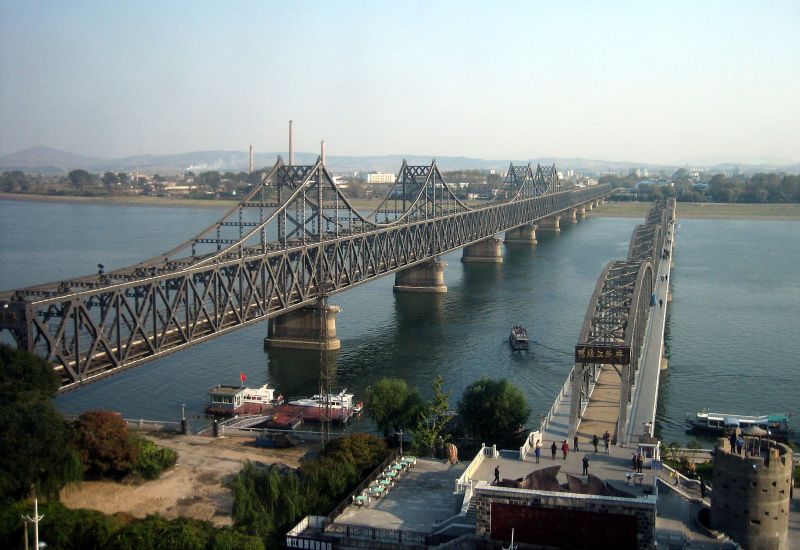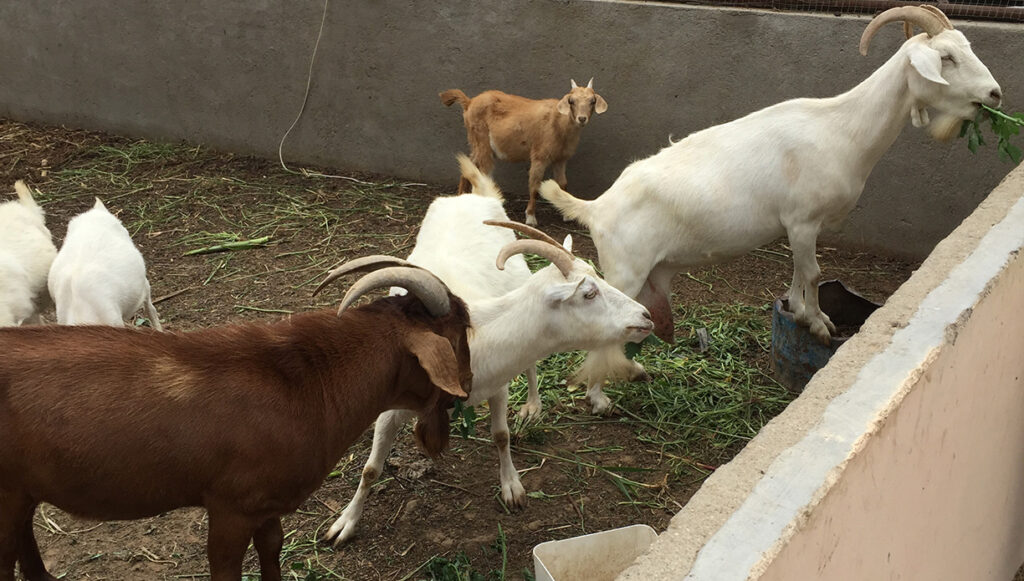David M Berry, 25th June 2018
Dear Reader, we have not sent a newsletter for some time and this one will be a bit of a ramble over various topics. I have just returned from a delayed Spring visit to China and hope that you will find some points of interest.
All the news from Dragon’s Garden
First and most important, what have we been up to at Dragon’s Garden?
We have installed a new washing line in the freezing factory; the new kit can be viewed in the photograph to the right. All moving parts on the new line can be lifted clear of the water by a mechanism in the towers, enabling more efficient cleaning of the line.
We have extended our IQF tunnel by a further 3 metres which has increased efficiency and hourly throughput.
Our new pasteuriser is now installed in its new workshop. The only job to complete is the tiling of the workshop which will be done by mid-July. This machine together with a new homogeniser will permit us to run top-quality sweetened and unsweetened purees.

In our drying factory a new drier has been ordered and we now await a break in production for installation. This drier is wider than our two existing main driers and has the potential to double our production. We very much look forward to this addition. Furthermore in the drying factory a new recycling/re-concentrating plant has been instated. This kit will improve production efficiency and quality for juice-infused and sugar-infused dried fruit fruits and will enable the new drier to run at full capacity.
You can see that our ‘continuous improvement’ policy marches ahead! There is quite a bit to see if you are planning to visit Dragon’s Garden this year. Some activities include slicing lemons for Dairy Queen of China, infusing and drying strawberries, sorting IQF blueberries, sorting IQF pineapple dices, processing and freezing apricot halves; and all are monitored by the 40 cameras of our new high definition CCTV system.
Freeze drying
During my visit last week Kirby Wang (Dragons Garden’s MD) and I made a visit to our Freeze Dry partner and the video on the right is their strawberry packing room. This is the assiduous sorting work that Chinese workers do better than anywhere else, in my opinion.
Demand from China and SE Asia
Across all our product items – from base-value frozen fruit to higher-value ice cream sauces and fruit
preparations – we are seeing a shift in demand as western markets lose some dominance and the Chinese and SE Asian markets take off. We hope that demand from customers such as Starbucks China and Dairy Queen China are not dragged into the Trump Trade War (more on that on page 3…). As an example of this rising demand in the Chinese market we have seen customers such as the computer giant Lenovo take a major position in fruit growing. Lenovo is now the largest blueberry grower in China for the fresh market, with a proportion of their crop also going for processing. Lenovo has a substantial blueberry propagating operation in Shandong which I was invited to visit. Images of the commercially sensitive tissue culture part of the process cannot be shared here of course, but the short video shows work in the growing-on part of the nursery.
Fruit growing developments in China
Part of last week was spent visiting two corners of Liaoning province to the north of our base in Shandong. Kirby and I travelled by Bullet train from Dalian to Dandong on the North Korean border, then on to Shenyang, Huludao and finally to Beijing. These 4 journeys together totalled 1260 km and cost about USD 40 per person for the entire trip. The bullet trains left each station to the minute. They pull away silently and smoothly and on the longer sections reach 245 km per hour. The station waiting areas are well lit and spacious and each of the approximately 1000 seats has a back-massage function which allows a very strong mechanical 20-minute massage for 1 USD. China has got public transport by train absolutely nailed. Very different to the hard yards we did nearly 20 years ago!
Some readers will possibly be familiar with Dandong, which sits on the banks of the Yalu river about 10km from its mouth. It is a bizarre place, where two parallel bridges reach out to North Korea.
Over one apparently 70% of Chinese supplies flow into the DPRK. The only goods permitted presently are foodstuffs due to sanctions and we saw a convoy of few small trucks making the crossing.
The other bridge was built by the Japanese in 1911 during their occupation of Manchuria and was partially blown up by American planes during the Korean war. This has been left as it was – and tourists can walk more than half way across the river on this bridge and gaze into the buildings in the DPRK, where it is very difficult to spot a single soul on the other side. Very strange indeed.
Our purpose for being in Dandong was to catch up with some contacts who grow organic strawberries. We used to do some substantial business with these folks, but their business has suffered since the Melamine scandal of 2008. This of course had nothing to do with their strawberries: but the scandal damaged buyer’s trust and hindered trade for all Chinese foodstuff manufacturers.
The strawberry growing area around Dandong is very pretty with pockets of strawberry fields nestled between fields of Schizandra.
From our stop in Huludao we travelled west towards the border with Inner Mongolia. This part of Liaoning is rather poor, but it is notable in that some very interesting fossils of dinosaurs and ancient plant life have recently been found. Some of the fossils show the evolution of dinosaurs to birds in the most graphic way ever seen.

Being a poor corner of the country the Chinese government has decided to contribute USD 250 million to his region’s development. Some funds will be spent on tourism but of special interest to us is a scheme where over 6000 acres is being planted with Heritage raspberries. We met some old grower friends there and toured the planted areas with the government officials and leading growers. The plants are doing very well and there appears to be sufficient water. Lack of water in some other parts of Liaoning have contributed to grandiose schemes collapsing in recent years. Our advice to this sort of gung-ho approach is be cautious; raspberry production has increased in many areas of the world and the market may not grow to absorb additional fruit in good time. However they have the bit between their teeth, so we will keep a close eye on this new area.

